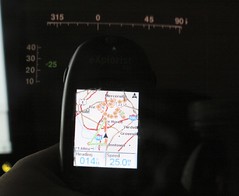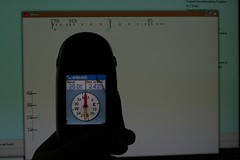T-Mobile's only Android device, the G1, isn't as open as you would think. The device lacks root access and the bootloader requires a signed image. Older versions of the OS have had a successful jailbreak but the most recent (R30) over the air firmware upload "fixed" that.
I jumped on the G1 bandwagon the day after it was announced hoping that it would live up to the openness Android was claiming. To be fair, the SDK does allow access to quite a bit more than the iPhone's SDK does which makes for some interesting applications not do able on the iPhone (for now). But the Google/T-Mobile team has stopped a bit short when it comes to moving from one Android device to another. There's no desktop client nor is there a backup/restore client! Think about that for a moment. When the time comes that you have the option to move to another Android device or, as in my case, have to replace your current one you're out of luck.
I searched the internet and even posted in a few google read forums (groups.google.com/groups/android-developers, forums.t-mobile.com) about how to move from one to the other. I read about the jailbreaking < R30 and the R30 hacked image if you already were jailbroken. I was told that it's T-Mobile's fault and to stop complaining. I was even told by one person that they clear their phone all the time for app testing and it only takes about 10-15 minutes and isn't a big deal. That person obviously isn't really using their phone.
T-Mobile customer support isn't much better either. They say you just have to download the applications again from the market and accept the data loss or they'll tell you about the jailbreak and how R30 shut it down and it's "impossible" to hack this new version. When you try to tell them that you want T-Mobile to provide root access or unlock the boot loader they tell you that Google writes the code and HTC makes the phone. They have nothing to do with it. This is a lack of understanding on the support staff's part. Google writes the base code, but it's modified for T-Mobile and only runs as a signed image.
Basically it seems that what's happening is that Google released some software prematurely as usual with their code but this is a very different case than the web were only the Google devoted will pick up the software before it's ready for prime time. T-Mobile pushed out the G1 as a iPhone replacement when it is not because of the build quality, the hardware itself and the premature OS. Now that they actually have real users with real problems that should have been caught long before in acceptance testing, they just want to ignore them. And they'll be able to because most people using the G1 won't know any better. There's always the Google apologists (and in some cases the Android devs themselves) that will say it's not their problem. There's no way to actually get in contact with someone who actually knows something about this level of detail about the G1 at T-Mobile. And finally, we already paid and signed a contract and are well past the 14 day return period. So the only way out is to pay more money to T-Mobile.
For anyone out there looking to develop on Android and the G1, PLEASE, PLEASE just spend the extra money on the Google Dev Phone 1 (http://code.google.com/android/dev-devices.html).
- No Contract
- No $18/$36 upgrade/activation fee (which is a whole different kind of BS)
- Full Control of your phone. Add new images. Root access.
To me this is what the G1 should have been. This is what Android was to represent.


